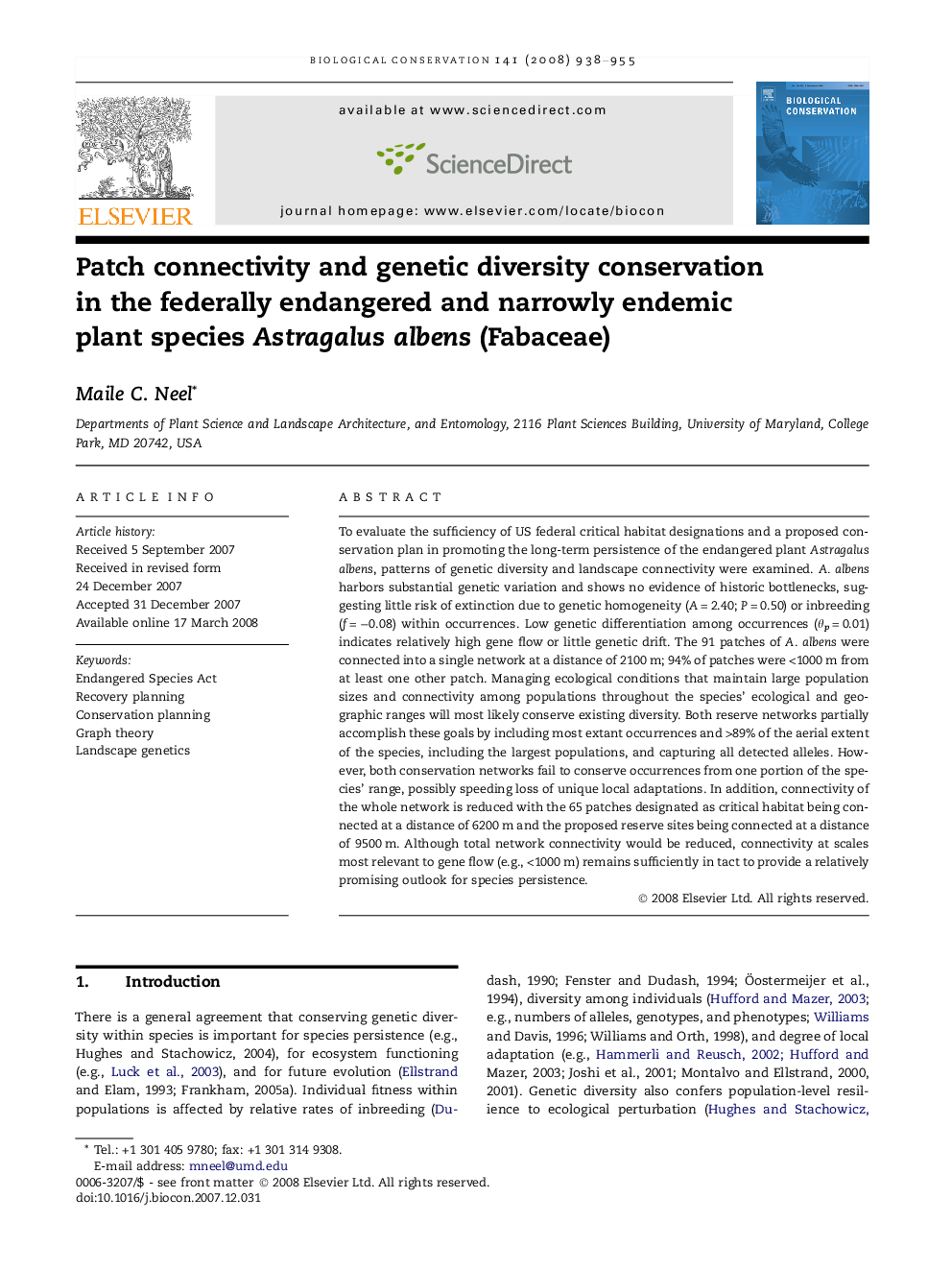| Article ID | Journal | Published Year | Pages | File Type |
|---|---|---|---|---|
| 4386688 | Biological Conservation | 2008 | 18 Pages |
To evaluate the sufficiency of US federal critical habitat designations and a proposed conservation plan in promoting the long-term persistence of the endangered plant Astragalus albens, patterns of genetic diversity and landscape connectivity were examined. A. albens harbors substantial genetic variation and shows no evidence of historic bottlenecks, suggesting little risk of extinction due to genetic homogeneity (A = 2.40; P = 0.50) or inbreeding (f = −0.08) within occurrences. Low genetic differentiation among occurrences (θp = 0.01) indicates relatively high gene flow or little genetic drift. The 91 patches of A. albens were connected into a single network at a distance of 2100 m; 94% of patches were <1000 m from at least one other patch. Managing ecological conditions that maintain large population sizes and connectivity among populations throughout the species’ ecological and geographic ranges will most likely conserve existing diversity. Both reserve networks partially accomplish these goals by including most extant occurrences and >89% of the aerial extent of the species, including the largest populations, and capturing all detected alleles. However, both conservation networks fail to conserve occurrences from one portion of the species’ range, possibly speeding loss of unique local adaptations. In addition, connectivity of the whole network is reduced with the 65 patches designated as critical habitat being connected at a distance of 6200 m and the proposed reserve sites being connected at a distance of 9500 m. Although total network connectivity would be reduced, connectivity at scales most relevant to gene flow (e.g., <1000 m) remains sufficiently in tact to provide a relatively promising outlook for species persistence.
